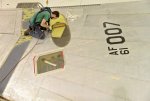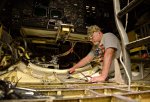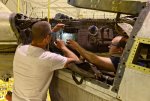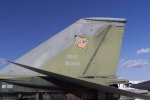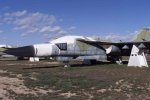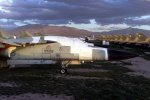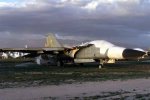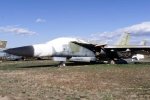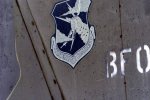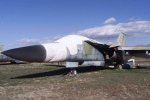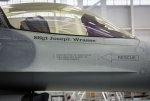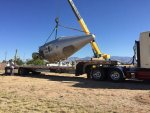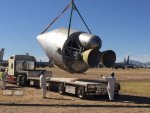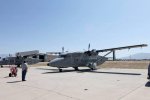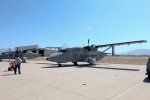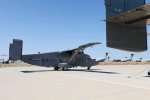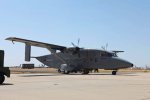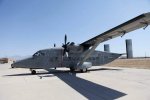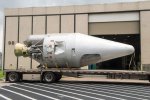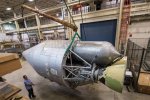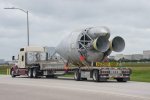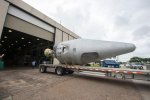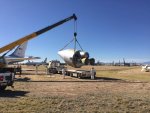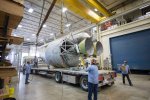Struck by the Thunderbolt
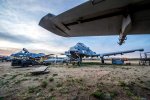
In the heart of the Sonoran Desert lies a 2,600-acre piece of land, a “boneyard,” where it is commonly understood a unique bond exists between an Airman and his aircraft.
Since the days shortly after World War II, this particular piece of land, located on Davis-Monthan Air Force Base, Arizona, has been the final resting place for tens of thousands of military aircraft, many of which have played a significant role in shaping the world since the early 1940’s.
The boneyard is home to the 309th Aerospace Maintenance and Regeneration Group. It’s where 600 technicians, from dozens of specialties, ensure the preservation or perform the “cannibalization” of the sleeping fleet. Most of the technicians have decades of experience, both military and civilian, spanning multiple generations of airframes. However, not many have the level of relationship Richard Brunt has with the A-10 Thunderbolt II, which pilots and crews lovingly refer to as the “Warthog.”
Those who come across Brunt in the boneyard, may assume he’s just another mechanic. He has that seasoned maintainer demeanor, sun-scorched skin, roughly calloused hands, and sarcasm perpetuated by thousands of hours of knuckle-busting wrench turns.
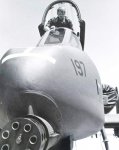
Nevertheless, Brunt is far more than a junkyard part puller.
“I joined the military in 1975, but it wasn’t until my second tour of active duty that I worked as an aviation crew chief,” said Brunt. “I always had a passion for all things aviation, so I was excited.
“Initially I worked five years on F-4 (Phantoms), F-111 (Aardvarks), and as a quality assurance inspector. But, in 1987, after a three-year tour at Osan Air Base, Korea, that’s when I was struck by the Thunderbolt.”
Brunt joined a “hodge-podge of crew chiefs and pilots” from all over the world who were tasked with activating the Air Force’s first OA-10 forward air controller (FAC) airborne unit.
“We all had to learn a new aircraft; none of us had touched an A-10 … it made us a close-knit group,” Brunt said. “All of us worked together, the mechanics and the pilots. We had one goal in mind: get qualified.”
From 1987 to 1990, Staff Sgt. Brunt and the 23rd Tactical Air Support Squadron trained day in and day out, traveling throughout the country. They were also tasked with providing heavily armed airborne FAC to support the Army’s renowned and battle-tested 82nd and the 101st Airborne Divisions.
After two years of intense training, the Davis-Monthan AFB OA-10 unit was called upon to support Operation Desert Storm. The unit would formally usher in the new era of close air-support and give rise to a new term – “tank-plinking.”
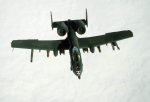
The sight of the group’s hard work and preparation finally being utilized during Desert Storm is as vivid for Brunt as if it were yesterday. He calls it the fondest memory of his career.
“I remember the night we caught the (Iraqi) Republican Guard moving south along the Highway of Death (Highway 80, which runs from Kuwait City to Basra, Iraq),” Brunt said. “The first group of A-10s I launched came back and the pilots were all pumped up. They had spotted a whole convoy that spanned many miles.
“That night, we launched nearly 600 jets. Our pilots did a typical tactical attack; they knocked out the front, then knocked out the back, boxing them in. Each jet carried 1,150 pounds of (high-explosive incendiary), the 30 millimeter cannon, four bombs, and two to four air-to-ground missiles … each one came back empty. It was a great day.”
Although missions like that night were filled with adrenaline and affirmation, those moments were always short-lived. Most days were filled with nonstop sortie generation, harsh conditions and constant angst from the surrounding dangers.
Still, it was never just a job for Brunt, it was a sense of pride; it was never just his name on the side of the plane that connected him to the machine, it was much deeper.
“Every day, multiple times a day, that was my plane heading into danger, my pilot relying on my machine to respond accurately and protect his life,” Brunt said.

Unfortunately, one of the most defining moments in Brunt’s love affair with the A-10 was the loss of a dear friend and colleague.
“His name was Lt. Patrick Olson,” Brunt said. “We called him Oly. He was a great officer. I was his crew chief; it was our names on the side of aircraft 77-197.
“I remember it clear as day. There was a light drizzle and as we prepared for launch; Oly was talking about how he heard the war may end really soon. I got him in the plane, buckled him up and he took off up north toward the Republican Guard.”
That day, Feb. 27, 1991, Olson was directing fire toward Iraqi tanks when he was spotted and immediately engaged. He quickly yanked the A-10′s vertical to the ground, banked sharply and instead of disengaging, went directly for the Iraqi tanks. Olson’s aircraft took critical damage.
“He was hit with (anti-aircraft artillery), they disabled his rudder and elevator,” said Brunt. He was told to bailout… but he said ‘No, I’m going to land this thing.’”
Because of the damage sustained by the aircraft, as he was preparing to land, the gear in his wing broke through the skin, the plane slide sideways, flipped over and burst into flames.
“I took it very hard,” explained Brunt, “When the expediter pulled me aside and told me that Oly wouldn’t be coming back, I burst into tears; it was hard for me to process.”
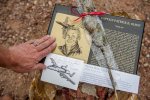
The war ended the next day.
After an emotionally charged six months in Saudi Arabia, Brunt spent the next five years traveling the world with the A-10, supporting multiple operations. Then, in 1996, after 17 years and 10 months in the service, Brunt was the subject of the Air Force’s reduction in force efforts; he retired as a technical sergeant with full benefits.
Following retirement, Brunt looked for ways to stay with the A-10. It wasn’t until 2002, after six years of working multiple jobs in aviation, that he was finally reunited with the aircraft.
“For years I had been trying to get back to the plane that I knew the best, the one I spent 11 years with,” Brunt explained. “The wait had been too long.”
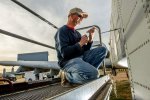
While the Thunderbolts were the same, Brunt’s new involvement with them was exactly the opposite of what it used to be. Instead of repairing them, he was tearing them apart.
“It’s a shame going through the save list and striping them down,” Brunt said. “It’s hard to imagine that the very aircraft that took me to all ends of the world would soon be crushed up, salvaged and probably turned into beer cans.
“At least for now, the A-10 will live on for a few more years and the parts I pull will keep the aircraft flying and save the tax-payers millions of dollars. When the A-10 is finally taken out of commission, it will not be forgotten. It has given me some of the greatest moments of my life. For that I owe it a great deal of gratitude.”
For those traveling to Davis-Monthan that get a chance to tour the boneyard, look for Brunt. You’ll find him hard at work, carefully stripping down the birds he once repaired. Ask him about his time with the A-10 and you’ll see a subtle grin and a sparkle in his eye…he’ll begin to point out his favorites starting with the NF (Nail FAC) Desert Storm aircraft.
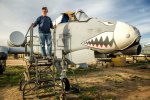 In 2010, Brunt organized the 23rd CAMS (consolidated aircraft maintenance squadron) Reunion Group. Each year more than 40 people join their annual gathering. They joke about the good times, drink to the bad times, and commemorate the loss of their fallen comrades.
In 2010, Brunt organized the 23rd CAMS (consolidated aircraft maintenance squadron) Reunion Group. Each year more than 40 people join their annual gathering. They joke about the good times, drink to the bad times, and commemorate the loss of their fallen comrades.
Story by Tech. Sgt. Brandon Shapiro // Photos by J.M. Eddins Jr.



